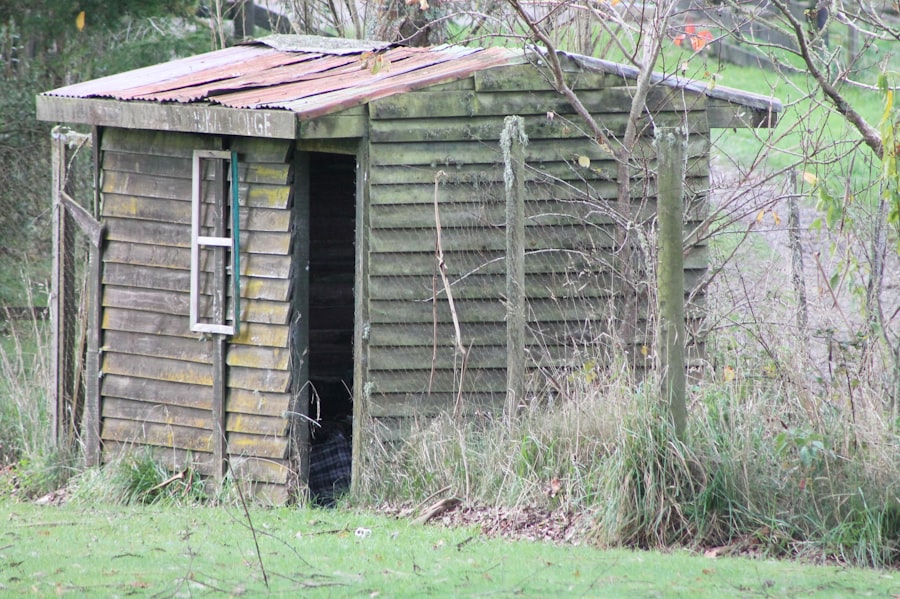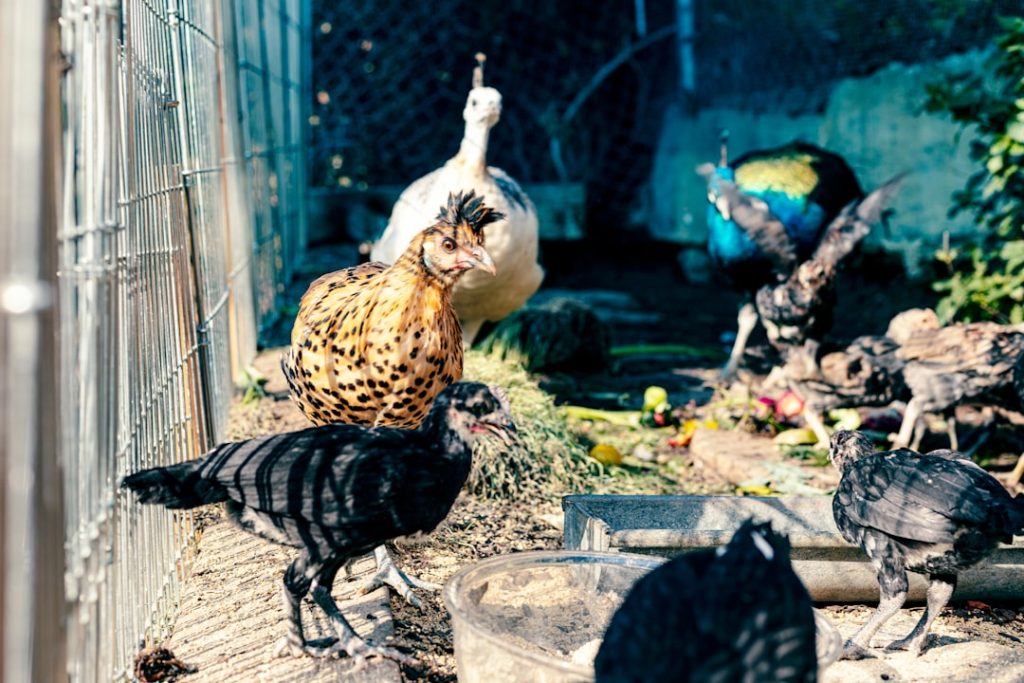Foxes are adaptable and intelligent animals renowned for their cunning and stealth. Primarily nocturnal, they are most active at night but can also be observed during daylight hours, particularly in areas where they have habituated to human presence. These opportunistic feeders consume a diverse diet, including small mammals, birds, insects, fruits, and vegetables.
Foxes are adept hunters capable of preying on chickens and other small livestock. Territorial by nature, foxes mark their domains with urine and feces to communicate with conspecifics. They excavate dens for shelter and rearing offspring.
Comprehending fox behavior and habits is essential for developing effective strategies to protect chicken coops and runs from these predators. Knowledge of their patterns and tendencies enables better anticipation of their movements and implementation of appropriate protective measures. Foxes are characterized by their agility and proficiency in climbing, jumping, and digging.
They excel at identifying and exploiting weaknesses in fencing and other barriers. Understanding these behaviors is crucial for implementing effective security measures to prevent foxes from accessing chicken coops and runs.
Table of Contents
- 1 Securing the chicken coop and run
- 2 Using deterrents and repellents
- 3 Installing motion-activated lights and alarms
- 4 Removing potential food sources
- 5 Utilizing guard animals
- 6 Regularly checking for signs of fox activity
- 7 FAQs
- 7.1 What are some effective methods for keeping foxes away from chickens?
- 7.2 What type of fencing is best for keeping foxes out of a chicken coop?
- 7.3 How can motion-activated lights or sprinklers help deter foxes from chickens?
- 7.4 Are there any natural predators that can help keep foxes away from chickens?
- 7.5 What should be done to secure a chicken coop at night to prevent fox attacks?
Key Takeaways
- Foxes are intelligent and adaptable animals with a keen sense of smell and excellent hunting skills.
- Secure the chicken coop and run with sturdy fencing and hardware cloth to prevent foxes from gaining access to your poultry.
- Use deterrents such as motion-activated sprinklers, ultrasonic devices, and natural repellents like predator urine to discourage foxes from entering your property.
- Install motion-activated lights and alarms around the chicken coop to startle and deter foxes from approaching.
- Remove potential food sources such as fallen fruits, garbage, and pet food to make your property less attractive to foxes.
- Consider utilizing guard animals like dogs or llamas to help protect your chickens from fox predation.
- Regularly check for signs of fox activity such as tracks, scat, and evidence of digging to stay ahead of potential threats to your poultry.
Securing the chicken coop and run
Securing the Chicken Coop and Run
One of the most effective ways to protect your chickens from foxes is to secure the chicken coop and run with sturdy fencing. The fencing should be buried at least 12 inches into the ground to prevent foxes from digging underneath it. Additionally, the fencing should be at least 6 feet tall and have a secure roof to prevent foxes from climbing or jumping over it.
Maintenance and Inspection
It’s also important to regularly inspect the fencing for any signs of wear or damage and promptly repair any weak spots. This will ensure that the fencing remains effective in keeping foxes out.
Fox-Proofing the Chicken Coop
In addition to securing the fencing, it’s important to make sure that the chicken coop itself is fox-proof. This means ensuring that there are no gaps or openings that foxes can squeeze through. All doors and windows should be securely latched, and any vents should be covered with strong wire mesh. It’s also a good idea to install motion-activated lights and alarms around the coop to deter foxes from approaching.
Eliminating Entry Points
Another important aspect of securing the chicken coop and run is to make sure that there are no overhanging branches or other structures that could provide a pathway for foxes to access the coop from above. By eliminating these potential entry points, you can greatly reduce the risk of foxes getting to your chickens.
Using deterrents and repellents

In addition to securing the chicken coop and run, using deterrents and repellents can help keep foxes away from your property. There are a variety of commercial repellents available that are designed to deter foxes by emitting unpleasant odors or tastes. These can be applied around the perimeter of the coop and run to create a barrier that foxes will be reluctant to cross.
Another effective deterrent is the use of predator urine, such as that of coyotes or wolves. Foxes are naturally wary of larger predators, so the scent of their urine can help keep them at bay. Predator urine can be purchased in liquid form or in granules that can be sprinkled around the perimeter of the coop and run.
Some people also use homemade deterrents such as chili powder or garlic spray to repel foxes. These can be applied to the ground or on plants around the coop to create a strong odor that foxes will find unpleasant. It’s important to note that while deterrents and repellents can be effective in keeping foxes away, they may need to be reapplied regularly, especially after heavy rain or snow.
Additionally, it’s a good idea to use a combination of different deterrents to maximize their effectiveness.
Installing motion-activated lights and alarms
Motion-activated lights and alarms can be an effective way to deter foxes from approaching your chicken coop and run. These devices are designed to detect movement and then emit a bright light or loud noise, which can startle and scare off foxes. By installing motion-activated lights around the perimeter of the coop and run, you can create a well-lit area that will make foxes feel exposed and vulnerable.
This can make them think twice about approaching your property, especially at night when they are most active. Similarly, motion-activated alarms can be used to startle foxes and discourage them from coming near the coop. These alarms can emit a loud noise that will not only scare off foxes but also alert you to their presence, allowing you to take further action if necessary.
It’s important to regularly test and maintain motion-activated lights and alarms to ensure that they are functioning properly. This includes replacing batteries as needed and adjusting the sensitivity settings to ensure that they are triggered by any movement around the coop.
Removing potential food sources
Foxes are attracted to areas where they can easily find food, so removing potential food sources from your property can help reduce the likelihood of fox activity. This includes securing garbage cans with tight-fitting lids, cleaning up any spilled birdseed or pet food, and keeping compost piles covered. It’s also important to regularly clean up any fallen fruit from trees or bushes, as well as any vegetables from gardens.
By removing these food sources, you can make your property less appealing to foxes and reduce the likelihood of them targeting your chickens. Additionally, it’s a good idea to avoid leaving out food scraps or leftovers that could attract foxes. If you have outdoor pets, make sure to feed them indoors or promptly remove any uneaten food from outside.
By removing potential food sources from your property, you can help discourage foxes from frequenting your property in search of an easy meal.
Utilizing guard animals

Utilizing Dogs as Guard Animals
Dogs are natural predators of foxes, and their presence alone can be enough to deter them from approaching your property. Many breeds of dogs are known for their protective instincts and can be trained to patrol the perimeter of the coop and run.
The Benefits of Geese as Guard Animals
Geese are also effective guard animals as they are territorial and will aggressively defend their territory against intruders. Their loud honking can alert you to the presence of foxes, giving you time to take action.
Introducing and Training Guard Animals
It’s important to properly introduce guard animals to your chickens to ensure that they coexist peacefully. Additionally, regular training and socialization are important for guard animals to be effective in protecting your chickens from predators.
Regularly checking for signs of fox activity
Finally, regularly checking for signs of fox activity around your property is crucial in preventing potential attacks on your chickens. Look for tracks, scat, or evidence of digging near the coop and run. If you notice any signs of fox activity, take immediate action to reinforce security measures and consider using additional deterrents.
It’s also important to inspect the perimeter fencing for any signs of wear or damage that could provide an entry point for foxes. Regular maintenance and repairs will help ensure that your chicken coop and run remain secure against potential predators. By staying vigilant and regularly checking for signs of fox activity, you can take proactive measures to protect your chickens from these cunning predators.
If you’re looking for ways to protect your chickens from foxes, you may also be interested in learning about duck mating season. Check out this article on when duck mating season occurs to ensure the safety and well-being of your ducks.
FAQs
What are some effective methods for keeping foxes away from chickens?
Some effective methods for keeping foxes away from chickens include using secure fencing, installing motion-activated lights or sprinklers, using guard animals such as dogs, and keeping chickens in a secure coop at night.
What type of fencing is best for keeping foxes out of a chicken coop?
The best type of fencing for keeping foxes out of a chicken coop is hardware cloth or welded wire fencing with small openings (no larger than 1 inch) that extends at least 18 inches below the ground and 6 feet above the ground.
How can motion-activated lights or sprinklers help deter foxes from chickens?
Motion-activated lights or sprinklers can startle and deter foxes from approaching a chicken coop by creating sudden bursts of light or water when the fox comes near, making the area less appealing for the fox to hunt.
Are there any natural predators that can help keep foxes away from chickens?
Guard animals such as dogs or even certain breeds of chickens, like the Maremma or Anatolian Shepherd, can help protect chickens from foxes by alerting the owner to the presence of a predator and potentially scaring the fox away.
What should be done to secure a chicken coop at night to prevent fox attacks?
To secure a chicken coop at night and prevent fox attacks, make sure all doors and windows are securely closed and locked, and check for any gaps or holes in the coop that a fox could potentially squeeze through.
Meet Walter, the feathered-friend fanatic of Florida! Nestled in the sunshine state, Walter struts through life with his feathered companions, clucking his way to happiness. With a coop that’s fancier than a five-star hotel, he’s the Don Juan of the chicken world. When he’s not teaching his hens to do the cha-cha, you’ll find him in a heated debate with his prized rooster, Sir Clucks-a-Lot. Walter’s poultry passion is no yolk; he’s the sunny-side-up guy you never knew you needed in your flock of friends!







